This year marks the 20th anniversary of a remarkable project to save the beautiful Yellow-eared Parrot, which at the time was teetering on the edge of extinction, following its rediscovery in Colombia. Fundación ProAves, Loro Parque Fundación (LPF) and other organisations are celebrating the historic accomplishments of shared ongoing efforts in research, conservation and education over the last two decades of Proyecto Ognorhynchus.
Throughout the 20th century to the present day the decline of wildlife populations, particularly in tropical forests, has been inexorable, but few species showed such a catastrophic decrease as Yellow-eared Parrot. At the beginning of the last century the species was common in mountain forests in the Andes of Colombia and Ecuador, where it depended on Quindío wax palms, the world's tallest palm, for nesting, roosting and feeding.
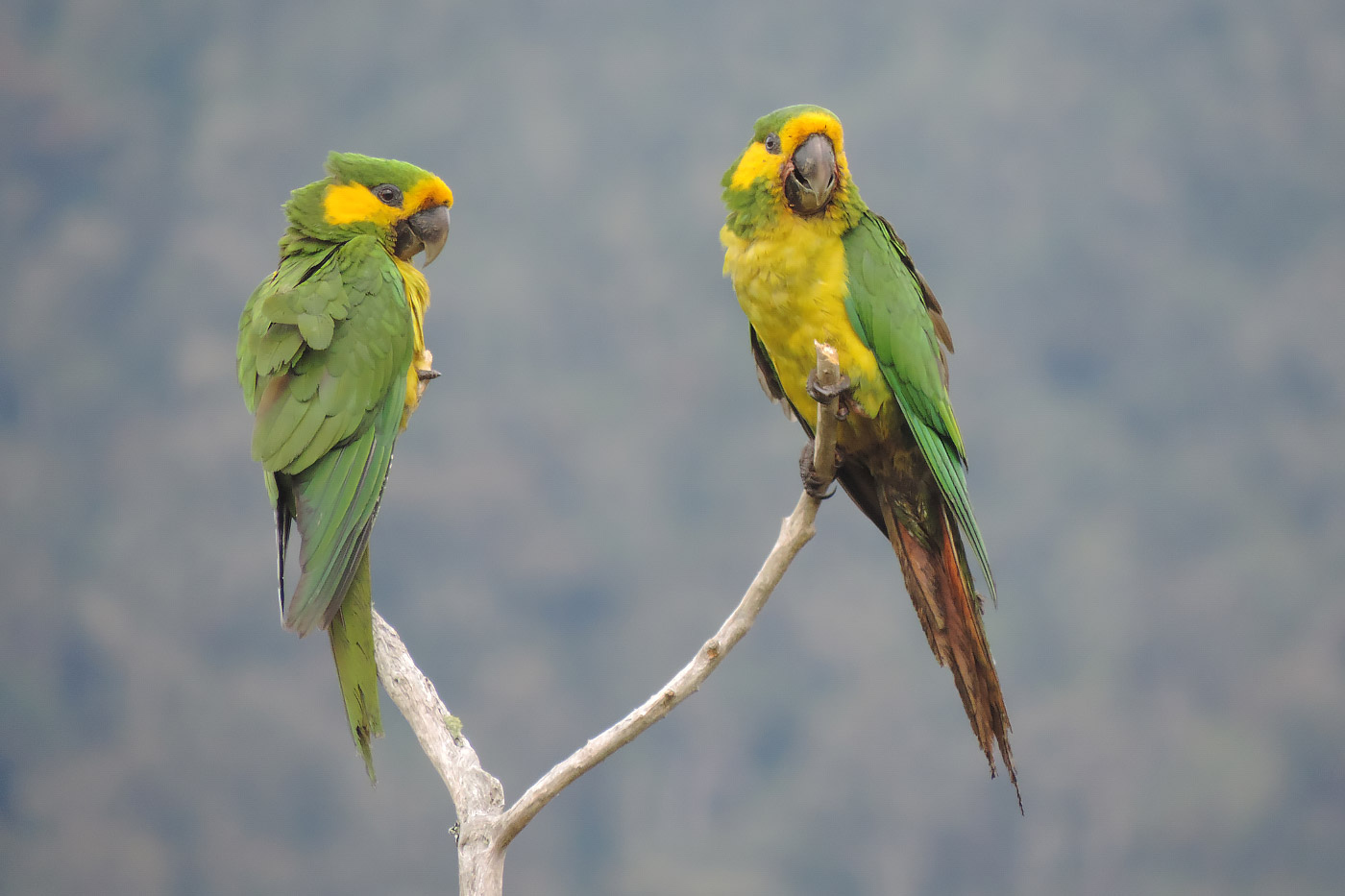
Previously widely present across Colombia and Ecuador, Yellow-eared Parrot is now found only in the former country (Fundación ProAves).
By 1991, only two flocks were known to survive, none were recorded in captivity and the global population numbered fewer than 50 individuals. Extensive conservation and research efforts in Ecuador were led by Dr Niels Krabbe and supported by LPF, which purchased land to protect a stand of palms and forest used by the last dwindling flock of 21 individuals in Ecuador.
However, this final group vanished in 1998, and extinction seemed inevitable. In 1986 the wax palm was declared the national tree of Colombia, but it is also threatened, having been assessed as globally Vulnerable by IUCN – deforestation for cattle pastures combined with overharvesting of the trees' leaves for use in the Catholic celebration of Palm Sunday have almost wiped it out.
However, in 1997, there was a report of a flock of 24 Yellow-eared Parrots in the Cordillera Central of Colombia, prompting a team to establish a search and recover project, Proyecto Ognorhynchus (and eventually to establish Fundación ProAves). Extensive exploration could not relocate the birds but, just as efforts were drawing to a close, the project team visited the remote Cucuana valley in the Central Andes of Tolima. There, on 18 April 1999, Yellow-eared Parrots were found once again. A total of 81 birds was count, including a breeding pair on a nest at the site. There was hope after all!
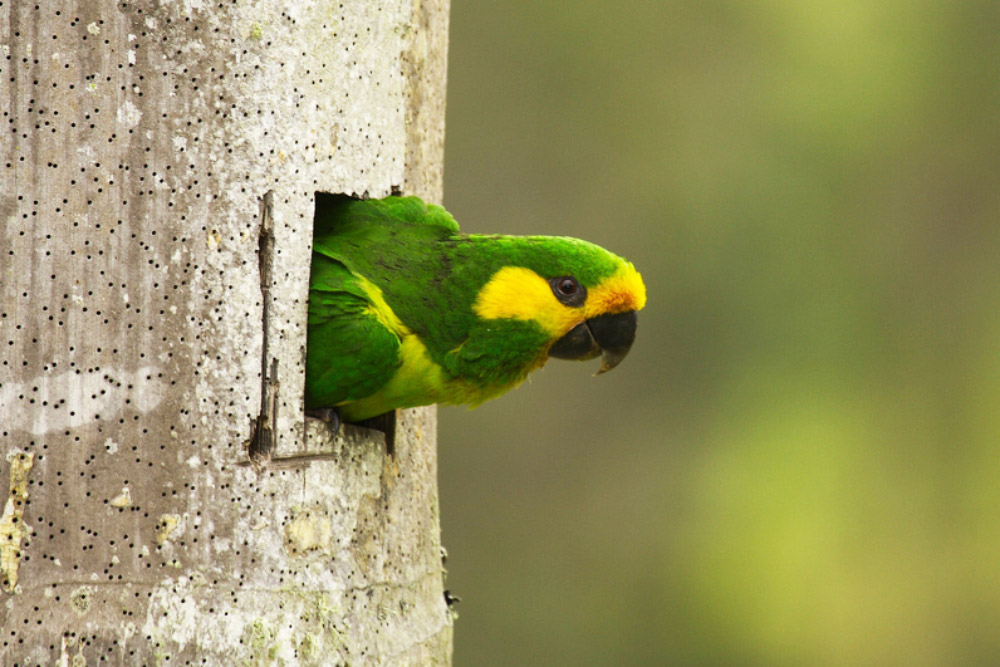
Yellow-eared Parrot is dependent on wax palms for nesting and feeding (Fundación ProAves).
The Proyecto Ognorhynchus team immediately launched a conservation programme to study and protect the species, gathering a wealth of information on the parrot's ecology and natural history. It became clear that Yellow-eared Parrot was an exceptionally social and strongly bonding species, dispersing from the wax palm roost sites at first light, gradually returning and arriving back at the roost sites by mid- to late-afternoon. Both parrot and wax palm faced multiple major threats, such as hunting for food and sport, habitat loss and complete lack of protected areas where the species occurred, lack of nest-site availability because dead standing wax palms were cut down by farmers, and overharvesting of wax palm fronds for Palm Sunday by felling wax palm stands. With these identified, the team formulated a conservation strategy, and its implementation has been fully supported by Loro Parque Fundación, which has to date donated US$1,611,444.
The project sought permission to work at the newly discovered colony, located within a stronghold of FARC (Fuerzas Armadas Revolucionarias de Colombia) guerrillas and a zone for confrontations with the National Army of Colombia. FARC declared that any person who killed a Yellow-eared Parrot could face death. Unsurprisingly, local inhabitants strictly adhered to the ban so that the threat from hunting stopped immediately, and thereafter the ProAves team had no evidence of a parrot being harmed.
A major obstacle was lack of enforcement of wax palm protection, and by the 1990s the core populations were restricted to 12 sites in Colombia (and four in northern Peru). Wax palms develop slowly, not reaching maturity until 75 years or more old. In the Cucuana valley, sporadic pastures have stands of uniformly mature wax palms of almost 100 years and more than 20 m tall. Their height makes them ideal nesting sites for parrots, being largely inaccessible to terrestrial predators. However, cattle grazing of palm seedlings results in almost zero recruitment. Research by ProAves showed that standing dead palm trunks were scarce, causing a lack of suitable nest sites to form a colony. From the Cucuana flock of 81 birds, just one chick fledged in 1999 from a 20-m dead and hollow palm. To address these problems, ProAves sought the collaboration of local farmers to change farming methods. Once the rural community was made aware that the fate of the parrot and palm was in its hands, that knowledge triggered an extraordinary positive response from farmers and the wider community.
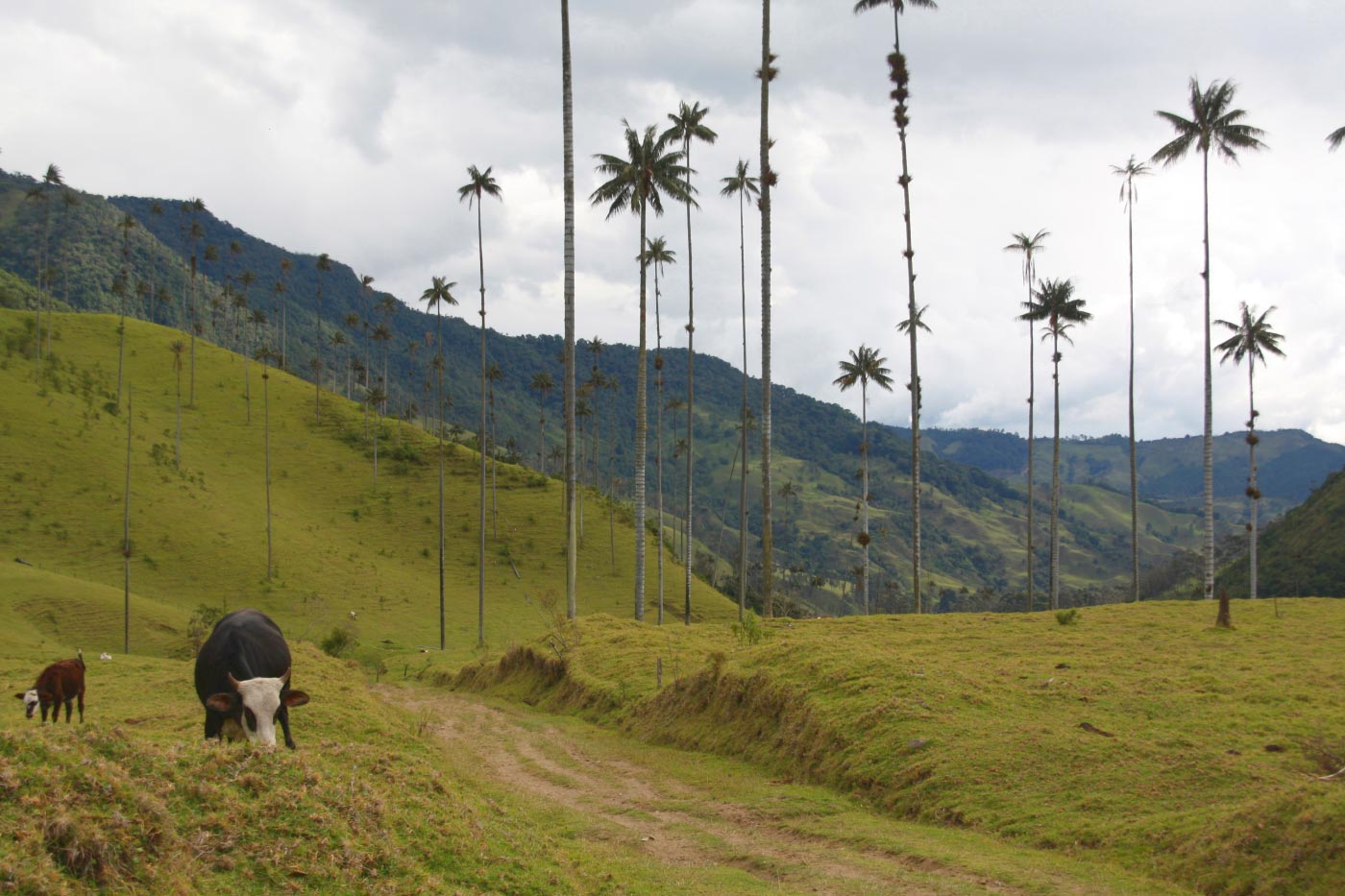
In many areas, intensive cattle grazing below wax palms has resulted in no new trees growing to replace those dying or cut down (A Advent).
No more dead palms were cut down and project staff helped farmers to protect forest patches from cattle. A palm nursery was established by the project to grow seedlings and plant a future generation in secure locations. Within just a few years, Yellow-eared Parrot breeding activities and reproductive success rates drastically increased. Furthermore, the project developed one of the first artificial nestbox campaigns in the Neotropics to supplement natural sites. Using wood shaped and painted as palm trunks, nestboxes were mounted on live palms. The parrots' use of the boxes was slow at first, but later deployment in new colonies with limited dead palms proved more successful. The most fruitful technique to facilitate nest availability was to cut a small hole halfway up the side of a recently dead palm. Parrots readily took to these palms and breeding productivity accelerated. Within just three years the breeding colony grew, fledging 93 young in 2002, with two back-to-back nesting seasons per year. The fledgling recruitment success rate averaged 64% for all breeding pairs. Of successful nests, an average 55% of nests fledged one chick, 31% fledged two chicks and 14% fledged three chicks.
Yellow-eared Parrot feeds on more than 18 different fruiting trees, regularly changing routes to seasonal sources of fruit, but predominately eats only six plant species. With 89% of montane cloudforests in the region having been cleared, mainly for cattle pasture, and the last surviving forests of the Cucuana and Cucuanita valleys totally unprotected, habitat protection was the next focus for the project. While LPF continued its support of all ongoing project activities, in 2009 the Rainforest Trust and the American Bird Conservancy helped with the purchase of private properties to establish the 3,998-ha Loros Andinos Bird Reserve in Tolima. The 189-ha Loro Orejiamarillo Bird Reserve was also established in Jardín, Antioquia, to create a base of conservation efforts for this new population. Furthermore, private property owners in the Cucuana valley were willing to enrol in a land stewardship scheme to set aside land for regeneration and reforestation.
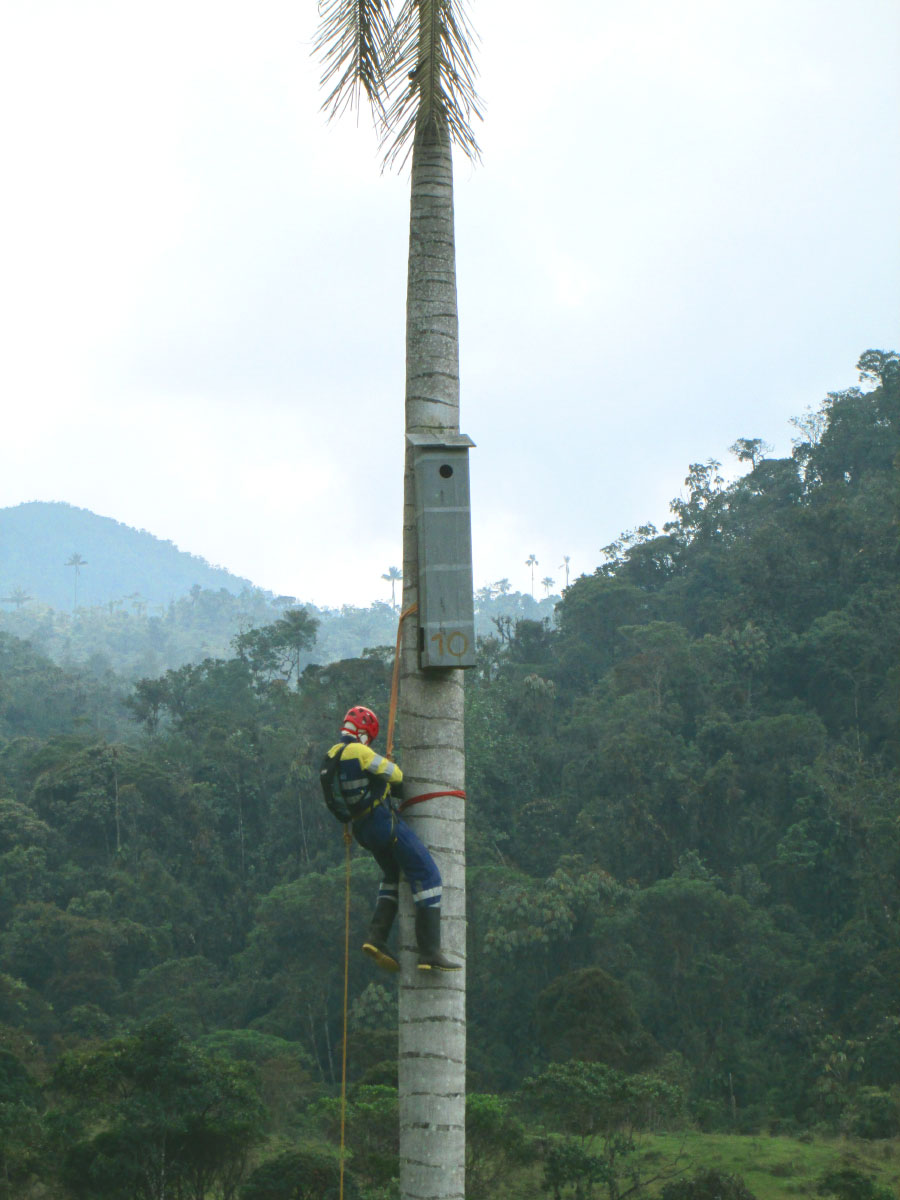
With a shortage of suitable dead palms available, nestboxes were mounted on living palms in order to provide more opportunities for the parrots to nest (Fundación ProAves).
Palm Sunday is widely observed across the Andes of Colombia. In Jardín alone in 2001, 200-300 wax palms were cut down to secure the four or five ;innermost emerging fronds used in the Palm Sunday procession. Wax palms were decimated ahead of each Holy Week, presenting perhaps the single biggest long-term threat to the survival of both parrot and palm. However, the project succeeded in convincing several priests in rural villages to stop using wax palms. ProAves helped by providing hundreds of wax palm seedlings for parishioners to carry in the processions with the message to plant them at home. This was largely a success, with only a few wax palm fronds used.
From 2002, ProAves and Conservation International-Colombia united with regional environmental corporations across Colombia to form a major national awareness campaign, called 'Reconcile with Nature'. This immediately gained media attention, with a free TV advertisement on the palm and parrot repeated on national TV channels before and during Holy Week for several years. The attention galvanised authorities to enforce the law and then, in 2004, the Cardinal of the Catholic church of Colombia instigated a nationwide ban on using wax palms in Palm Sunday processions, which from that moment celebrated nature and life.
To sustain the momentum, ProAves in partnership with governmental organisations sent the 'Loro Bus', a mobile environmental classroom, to reach hundreds of remote rural schools and communities across the Andes. For almost five years the bus toured the Andes educating and involving an average of 2,600 children and 400 adults per month. Saving wax palms and Yellow-eared Parrot was the new tradition, embraced and institutionalised across all generations of Colombians.
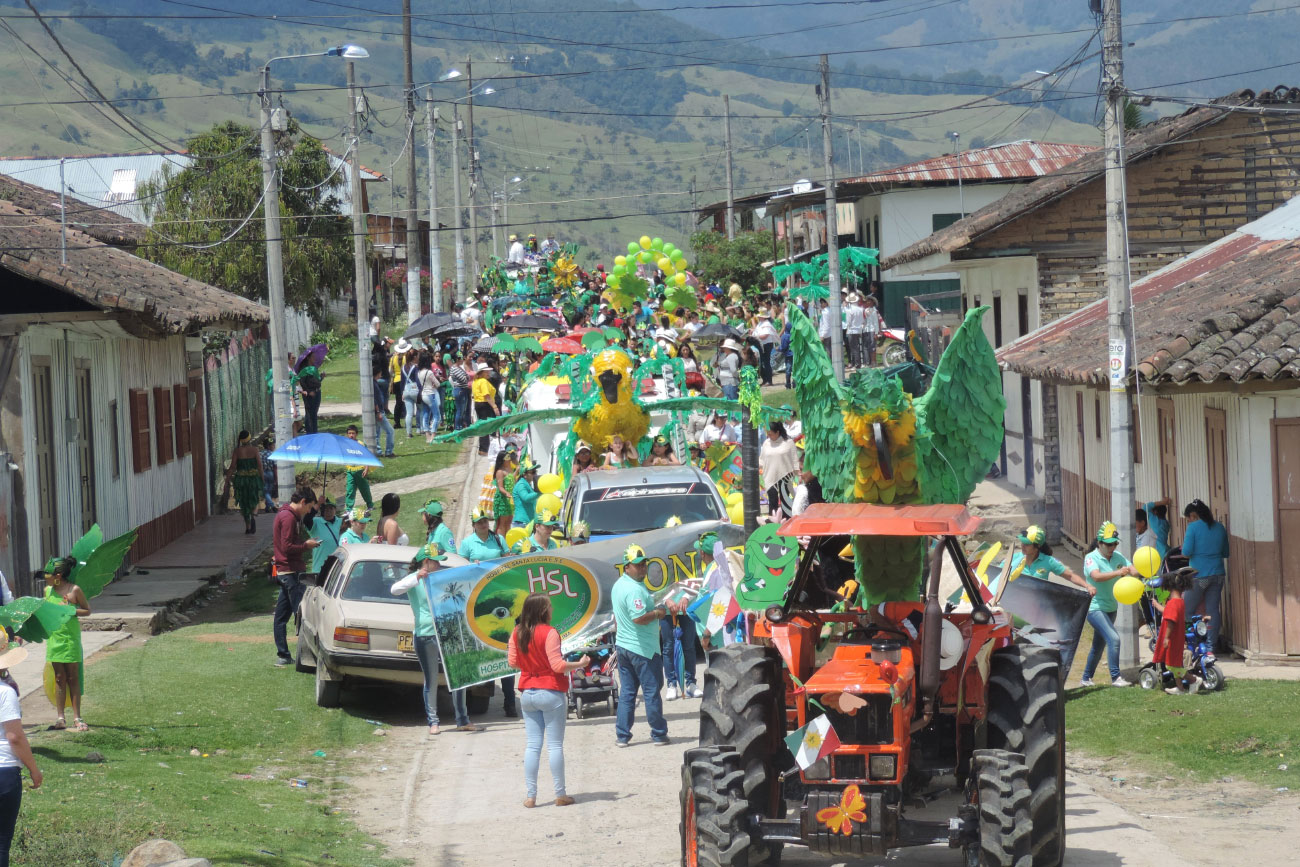
A 'Parrot and Palm' festival takes place in Colombia (Fundación ProAves).
How has the Yellow-eared Parrot population responded? In addition to 93 chicks fledging successfully by 2002, a second breeding population was located in the Western Andes between Jardin and Rio Sucio, 96 miles directly north of the Cucuana valley. This marked the beginning of the species recolonising areas with wax palms from the two source populations. By 2010, the population had risen to 1,103 – although only 106 breeding pairs were active – and by 2013, there were 1,408. A national parrot census was organised by ProAves in December 2018, simultaneously conducted at 41 sites in the Western, Central and Eastern Cordilleras, and confirmed 2,250 individuals. A repeat census in April 2019 surveyed 12 locations and documented 2,601 individuals, including 998 in Roncesvalles (a 13-fold increase since 1999). The April count is deemed most accurate as it was undertaken when most individuals congregate at roosts in the breeding colonies. Yellow-eared Parrot's continued recovery has warranted a downgrade of the species' IUCN status to Near-threatened. Flocks have already expanded southward to within 68 miles of wax palms in Ecuador, where the species' return is imminently expected.
Two decades of an intensive, multifaceted, science-driven conservation effort initiated by Fundación ProAves, with 20 years of major support from Loro Parque Fundación, have resulted in the most successful recovery of a species on the brink of extinction in the Americas. Many other individuals, organisations and entities also deserve gratitude for supporting the initiative to make a difference. Last but not least, thanks are due to the people of Colombia – the dire plight of both parrot and palm united a nation to work collaboratively, to make changes and give nature hope.

